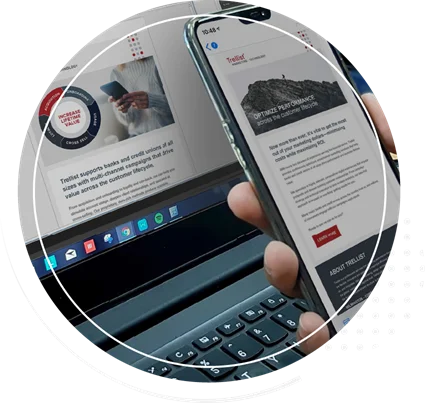“We’re all in this together.”
It’s a rallying cry heard in 9 out of 10 advertisements these days. And while it may be true, it’s nothing more than a nice sentiment unless brands can show how they are actually providing support to their customers in times of crisis.
We’re in uncharted territory as marketers. The COVID-19 pandemic continues, and it’s still uncertain when we’ll be able to return to any sort of normal. For weeks, we’ve seen brands challenged with how to navigate these unprecedented times.
No doubt you’ve recently received an email or seen a social post from most businesses you’ve previously engaged with, all with some sort of quarantine-related messaging. But was it effective? Was it necessary? Sadly, more brands seem to be getting it wrong than getting it right. Don’t end up on the wrong side of that equation. Because the bad taste it could leave in consumers’ mouths has the potential to extend well beyond this pandemic.
It’s therefore critical to know when and how to responsibly communicate with your audience in this environment. Personally, I’ve been following a simple “do and don’t” gut check when helping our clients rethink their messaging strategies.
Don’t add to the clutter.
Marketing that reminds people to wash their hands or demonstrates clever ways that you’re social distancing isn’t saying anything new. It may not be particularly relevant to your brand or product, and it’s not providing content that offers real value to the consumer. At its worst, it can be seen as a self-serving opportunity to capitalize on a crisis. Remember—your audience wants to feel like you’re doing this for them, not for you. There’s a big difference between truly “being there” for your customers and using false empathy to sell a product.
Some brands are getting roasted for this in the court of public opinion. And at a time when most folks have more time than ever to share across social media, viral jokes and memes about these missteps can wind up having a bigger impact on a brand’s reputation than the ads themselves.
This is not the time to get cute or deliver faux public service announcements. It’s not the time to try and piggyback on what’s trending to get your content in front of more eyeballs. Put yourself in the shoes of your audience. How would they react to your message? Are you showing them a new idea or solution? Is your intent genuine? And, perhaps most importantly, are you providing something of value or benefit to your customer?
Consumers are getting fatigued by the clutter of copycat advertising, which can lead them to tune out any messaging that references COVID-19. And there’s content out there—from the news media, from medical sources, from companies offering assistance—that the public actually needs to see. Don’t get in the way.
Do tailor your messaging strategy.
On the other hand, it can be just as tone-deaf to pretend like nothing’s happening and proceed with “business as usual” marketing. All marketers are being forced to learn new ways to say things. We should be exploring ways of being sensitive to the crisis, without making false connections between our brands and pandemic relief.
This may be a good opportunity to adjust your short-term messaging strategy to focus on a different value proposition. For example, if there’s a way your business makes it easier to work remotely or helps keep children active while out of school, this may be the perfect time to lean into that. It gives consumers a reason to turn to your product now and to believe in your brand beyond the pandemic. That’s adding real, tangible value (for both your customers and your business) that provides more long-term benefit than refreshing your slogan or cleverly changing your logo to promote social distancing.
If a total shift in positioning strategy isn’t an option, there are still ways to be more strategic with your creative. You have to look at everything through the COVID-19 lens, even if your marketing isn’t directly addressing it. It’s in the details. Opting for visuals of consumers shopping online versus in a store, or messaging that speaks to planning future travel versus actually being on vacation—these are decisions that avoid explicitly referencing the situation, but will more successfully resonate with your audience. They’ll (consciously or subconsciously) relate to it, because this is the new reality they’re living in.
And remember, sometimes staying quiet can be an effective content strategy. It may be the time to adjust your marketing efforts, focusing only on what’s absolutely necessary until we’re through this. It’s like mom always said, “If you don’t have anything nice relevant to say, don’t say anything at all.”
We know it’s not feasible to halt your operations or pause your marketing until this crisis is over. We’re all trying to keep our businesses moving forward as best we can until we come out on the other side. Until then, it’s all about walking that fine line, remaining sensitive but smart when communicating with your prospects and customers.
At Trellist, we’re busy helping many of our clients find that balance in their messaging strategies. If you’re having trouble figuring out where to begin, we’re here to provide insight and help you identify the right angle, the right tone, or the right messaging for your brand.












